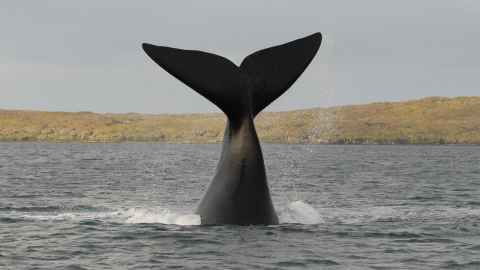Centuries of whaling data highlight likely climate change effect
1 March 2023
Centuries-old whaling records show how southern right whales, or Tohorā, are altering their feeding habits.

Southern right whales adjusted their foraging grounds over the past 30 years as climate change altered where prey could be found, according to a University of Auckland, Waipapa Taumata Rau scientist.
Dr Emma Carroll, of the School of Biological Sciences, was senior author of a paper which used data gleaned from contemporary whale skin samples along with whaling records stretching back to 1792.
Over the past three decades, the whales increased their use of mid-latitude foraging grounds in the south Atlantic and southwest Indian oceans in the late summer and autumn, according to Carroll and dozens of collaborators including lead author Solène Derville, of Oregon State University.
The whales also slightly increased their use of high latitude foraging grounds in the southwest Pacific, according to the article, published in the journal PNAS.
Southern right whales, or Tohorā, live south of the equator, eating krill and copepods, which are small crustaceans.
Chemical analysis of skin samples revealed the whales’ feeding patterns in recent decades. The main source of historic data was the American whaling fleet's detailed records of where and what species were observed and killed in the Southern Hemisphere from the 18th to the early 20th century.
The whales' history and efforts to support Aotearoa's population are detailed on the website Tohorā Voyages.
Tohorā were hunted to near extinction, with global numbers falling to as low as 500. By 2009, an estimated 2,200 of the creatures were in New Zealand waters, moving between the sub-Antarctic Auckland Islands (Maungahuka) and Campbell Island (Motu Ihupuku), and occasionally around mainland New Zealand including Stewart Island (Rakiura).
Southern right whales live from about 30 degrees South to more than 60 degrees South, the edge of the Antarctic.
Large and slow-moving, the whales are mostly black in colour and easily identified by white growths on their heads called callosities. They have no dorsal fin and a V-shaped blowhole spray.
Media contact
Paul Panckhurst | media adviser
M: 022 032 8475
E: paul.panckhurst@auckland.ac.nz